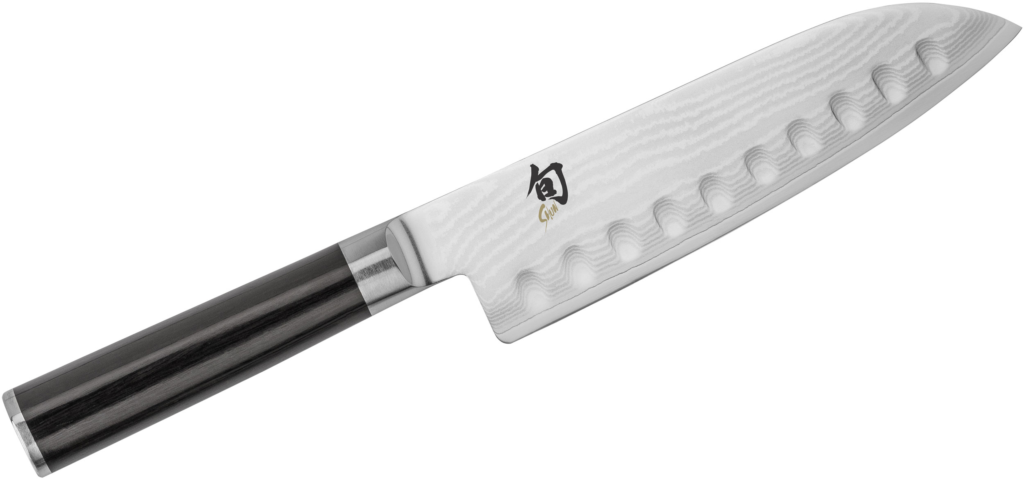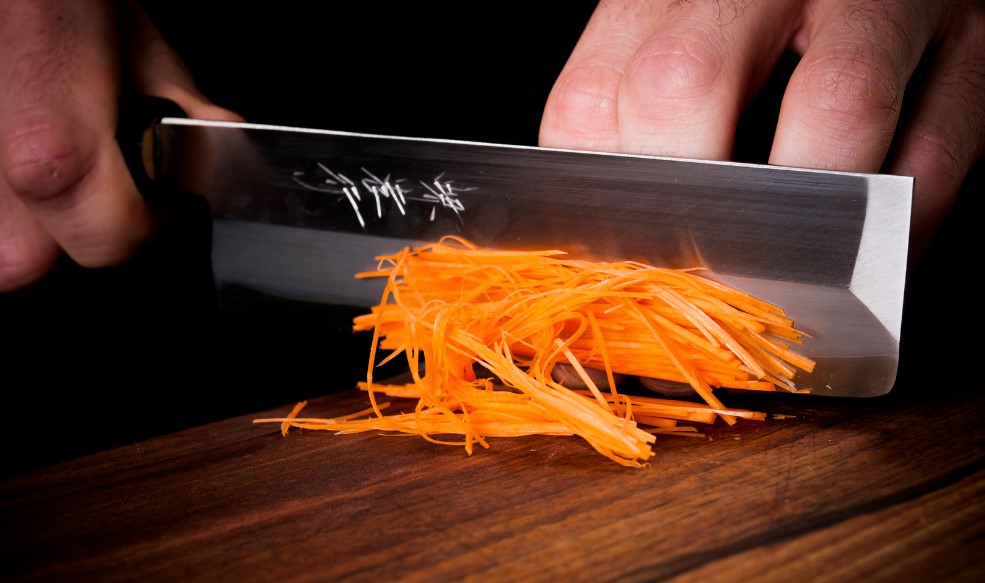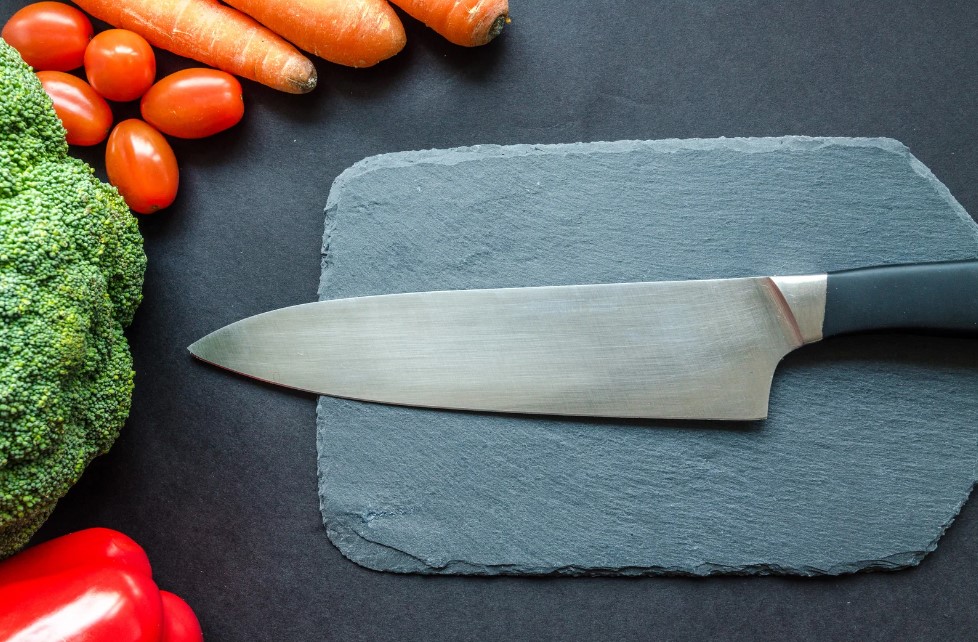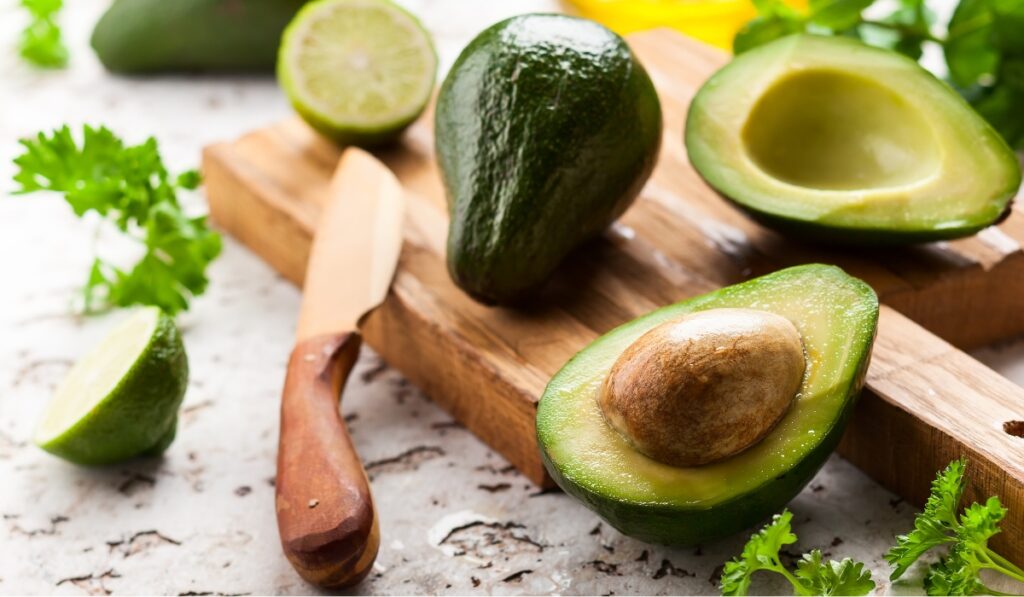When it comes to slicing, dicing, and chopping vegetables, having the right knife can make all the difference in both the ease of preparation and the quality of your cuts. In this guide, we will explore the best knife for cutting vegetables and provide some helpful tips for using and maintaining your knife.
Table of Contents
Choosing the Best Knife for Cutting Vegetables
There are several types of knives that are well-suited for cutting vegetables, but two stand out as the most versatile and useful options:
- Chef’s Knife: A chef’s knife is the all-purpose workhorse of the kitchen and is perfect for a wide range of vegetable cutting tasks. Its broad, slightly curved blade allows for easy rocking motion when chopping, while the sharp tip is ideal for more precise tasks such as mincing garlic or shallots. Look for a chef’s knife with an 8-inch blade for maximum versatility.
Top Pick: The Wusthof Classic 8-inch Chef’s Knife is an excellent choice, featuring a high-carbon stainless steel blade and a comfortable, ergonomic handle.

💡 How To Peak The Best Knife For Cutting Vegetables?
- Santoku Knife: A Japanese-style knife, the santoku knife is specifically designed for slicing, dicing, and chopping vegetables. It has a shorter, wider blade than a chef’s knife, with a slight curve and a flat cutting edge. The blade often features hollow-ground indentations known as Granton edges, which help reduce friction and prevent food from sticking to the knife while cutting.
Top Pick: The Shun Classic 7-inch Hollow-Ground Santoku Knife is a popular choice, offering a high-quality VG-MAX cutting core, a comfortable D-shaped Pakkawood handle, and a beautiful Damascus-clad blade.

3. Nakiri knives are traditional Japanese vegetable knives characterized by their rectangular, thin, and straight-edged blade. Designed specifically for precise and efficient chopping, slicing, and dicing of vegetables, these knives excel in providing clean, uniform cuts. The double-beveled edge accommodates both right and left-handed users, while the flat cutting surface reduces the chance of vegetables sticking to the blade. Often crafted with high-quality materials and featuring a comfortable, ergonomic handle, Nakiri knives are a staple in both professional and home kitchens for their exceptional performance in vegetable preparation.

Comparison Table of Chef’s Knife, Santoku and Nakiri for Cutting Vegetables
| Feature | Chef’s Knife | Santoku Knife | Nakiri Knife |
|---|---|---|---|
| Blade Shape | Tapered, with a curved cutting edge | Broad, with a slightly curved cutting edge | Rectangular, with a straight cutting edge |
| Blade Length | Typically 8-10 inches | Typically 5-7 inches | Typically 5-7 inches |
| Blade Material | High-carbon stainless steel or carbon steel | High-carbon stainless steel or carbon steel | High-carbon stainless steel or carbon steel |
| Cutting Technique | Rocking motion, ideal for mincing | Chopping or slicing in a downward motion | Straight up and down chopping motion |
| Primary Use | Multipurpose, including cutting vegetables | Multipurpose, with a focus on slicing | Designed specifically for cutting vegetables |
| Edge Bevel | Double-beveled (for both right and left-handed users) | Double-beveled (for both right and left-handed users) | Double-beveled (for both right and left-handed users) |
| Origin | Western (Europe) | Japan | Japan |
How to Cut Vegetables Efficiently and Safely
To get the most out of your knife and ensure safety while cutting vegetables, follow these tips:
- Use a stable cutting surface: A non-slip cutting board will prevent the vegetables from moving around while you cut, making the process safer and more efficient.
- Hold the knife properly: Use a pinch grip by pinching the blade’s base with your thumb and index finger, and wrap your remaining fingers around the handle. This grip provides better control and stability.
- Practice your cutting technique: For a chef’s knife, use a rocking motion, pivoting the blade on the cutting board while keeping the tip in contact with the surface. For a santoku knife, use a more straightforward up-and-down chopping motion.
- Keep your knife sharp: A sharp knife makes cutting vegetables easier and reduces the risk of accidents. Regularly sharpen and hone your knife to maintain its performance.

Maintaining Your Vegetable Cutting Knife
Proper care and maintenance of your vegetable cutting knife will ensure it remains in top condition for years to come. Here are some tips for maintaining your knife:
- Clean your knife promptly after use: Hand-wash your knife with warm, soapy water and dry it thoroughly to prevent rust and corrosion. Avoid using abrasive materials, which can scratch and damage the blade.
- Store your knife safely: Keep your knife in a dedicated knife block, on a magnetic strip, or in a protective sheath to protect the blade from damage and prevent accidents.
- Sharpen your knife regularly: Use a sharpening stone or a knife sharpener to maintain the sharpness of your knife. How often you need to sharpen your knife will depend on its usage, but it’s generally recommended to sharpen it every few months or when you notice a decrease in performance.
- Hone your knife: Honing your knife with a honing rod helps to realign the blade’s edge and maintain its sharpness between sharpening sessions. It’s a good practice to hone your knife before each use.
Frequently Asked Questions (FAQs) About the Best Knife for Cutting Vegetables
In this section, we address some common questions that people often have when it comes to choosing the best knife for cutting vegetables.
1. Can I use the same knife for cutting vegetables and meat?
While it’s possible to use a versatile knife like a chef’s knife for cutting both vegetables and meat, it’s a good practice to have separate knives for each task. This helps to prevent cross-contamination between raw meats and vegetables, ensuring food safety in your kitchen.
💡 How To Peak The Best Knife For Cutting Vegetables?
2. What is the difference between a chef’s knife and a santoku knife?
A chef’s knife typically has a longer, narrower, and slightly curved blade, while a santoku knife has a shorter, wider, and flatter blade. The chef’s knife is designed for a rocking cutting motion, whereas the santoku knife is better suited for an up-and-down chopping motion. Both knives are versatile and can handle a variety of cutting tasks, but the santoku knife is specifically designed for slicing, dicing, and chopping vegetables.
3. How do I know when it’s time to sharpen my knife?
You can perform the paper test to check the sharpness of your knife. Hold a piece of paper upright and try to slice through it with your knife. If the knife cuts through the paper cleanly and effortlessly, it’s sharp enough. If it tears the paper or struggles to cut through, it’s time to sharpen the blade.
4. Are ceramic knives good for cutting vegetables?
Ceramic knives have ultra-sharp blades that can make cutting vegetables a breeze. However, they are more brittle than steel knives and can chip or break if used improperly or dropped. If you choose to use a ceramic knife, be sure to handle it with care and avoid using it for tasks that involve twisting or prying.
5. What type of cutting board should I use when cutting vegetables?
Wooden or bamboo cutting boards are ideal for cutting vegetables, as they are gentle on your knife’s edge and are less likely to harbor bacteria. Plastic cutting boards are also a good option, as they can be easily sanitized in the dishwasher. Avoid using glass, granite, or other hard cutting surfaces, as these can quickly dull your knife’s edge.
6. How should I clean my vegetable cutting knife?
To clean your knife, hand-wash it with warm, soapy water and dry it thoroughly to prevent rust and corrosion. Avoid using abrasive materials, which can scratch and damage the blade. It’s generally not recommended to put your knife in the dishwasher, as the high heat and harsh detergents can damage the handle and blade.
Conclusion
In conclusion, the best knife for cutting vegetables is either a versatile chef’s knife or a specialized santoku knife. Both of these options provide excellent cutting performance and can handle a wide variety of vegetable preparation tasks. By choosing the right knife, practicing proper cutting techniques, and maintaining your knife, you can significantly improve your vegetable cutting skills.






